Breaking Bread
In conversation with Zachary Golper of Bien Cuit
Our Upper West Side market recently started serving baguettes, croissants, chocolate chip cookies, and other tasty treats from Bien Cuit, a Brooklyn-based bakery known for its use of sustainably-sourced grain and slow fermentation methods. The baker behind this distinctive baking style, Zachary Golper, first opened Bien Cuit on Smith Street in 2011 and has since earned five James Beard Foundation Award nominations for Best Baker.
We’ve teamed up with Zachary not only because his baked goods are the best in the city, but also because we share a lot of the same values. Luckily for us, he agrees. “We want to work with people who we believe in and who we know are going to represent us well because they represent themselves well,” he explains. “Working with Mast was a pretty easy choice because there's a lot of integrity in all the products coming through that place. Ethically, we're aligned pretty well.”
Here, Zachary shares how he honed his craft, why he settled in New York City, and what he loves most about his job now.
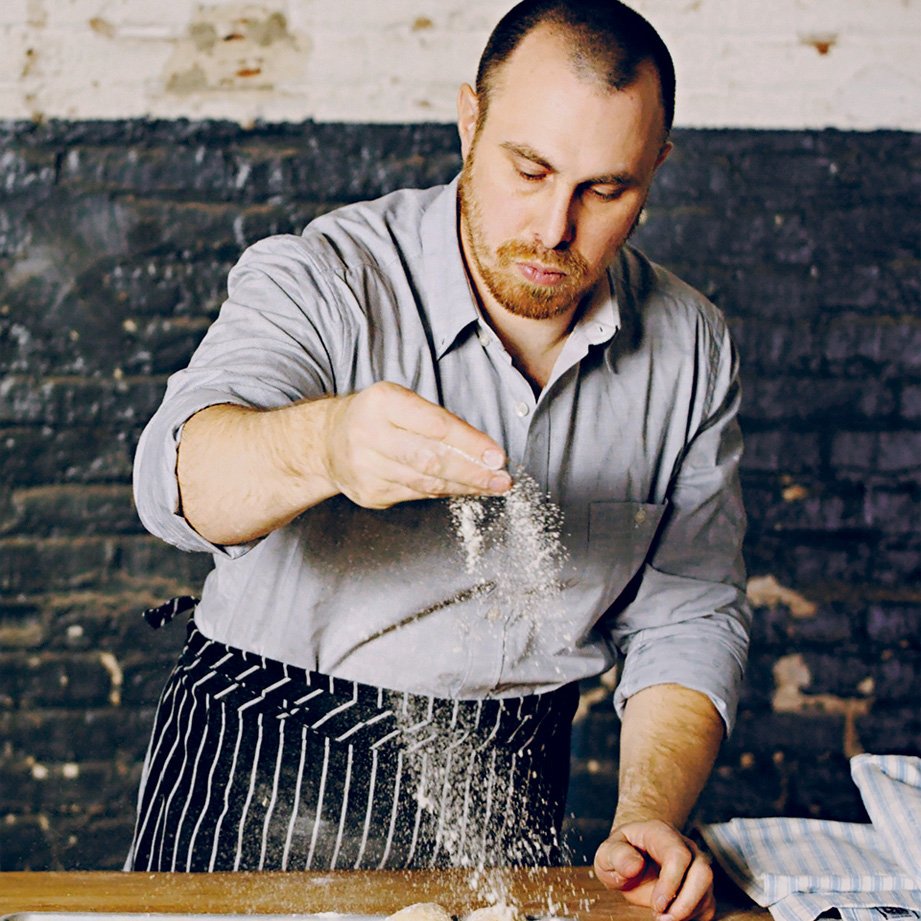
Photography by Thomas Schauer
Mast Journal: Where did you learn to bake bread and make pastries?
Zachary Golper: Through my journeyman phase of my career, I had the opportunity to work for some of the best in the world, successively, like four of the most extraordinary people in food at the time in their categories. And I just worked really hard. I didn't go in there saying, ‘I know how to do this or that.’ I went in there saying, ‘I really, really want to learn and I'm willing to give everything that I've got in order to learn.’ So it's a really strong background.
I worked for two Coupe du Monde de la Pâtisserie champions and Georges Perrier of Le Bec Fin, which was an outstanding restaurant when it existed. It closed its doors after 40 plus years shortly after I left, sadly, but I moved to Philly specifically for that. Just prior to that, I moved to Vegas to open the M Resort Hotel. And then prior to that, I had moved to Seattle to open Bakery Nouveau with William Leaman. And my progress was pretty outstanding.
MJ: How did you decide to open Bien Cuit?
ZG: By the time I was finished with Le Bec Fin, I felt really strongly attuned to my craft and I had no issues with starting a business other than it would be all of my money and I'd be putting myself out there in the most public way possible. It was risking everything for success. Of course, the definition of success changes over time, but at the time, the definition of success was two things. First of all, to stay in business and secondly, to present to people something that they have had 150 times or more in their lives. But to have them eat it and say, ‘Wow, this is not only unlike anything I've ever had before, but it's outstanding.’ And to reach a new benchmark of sourdough.
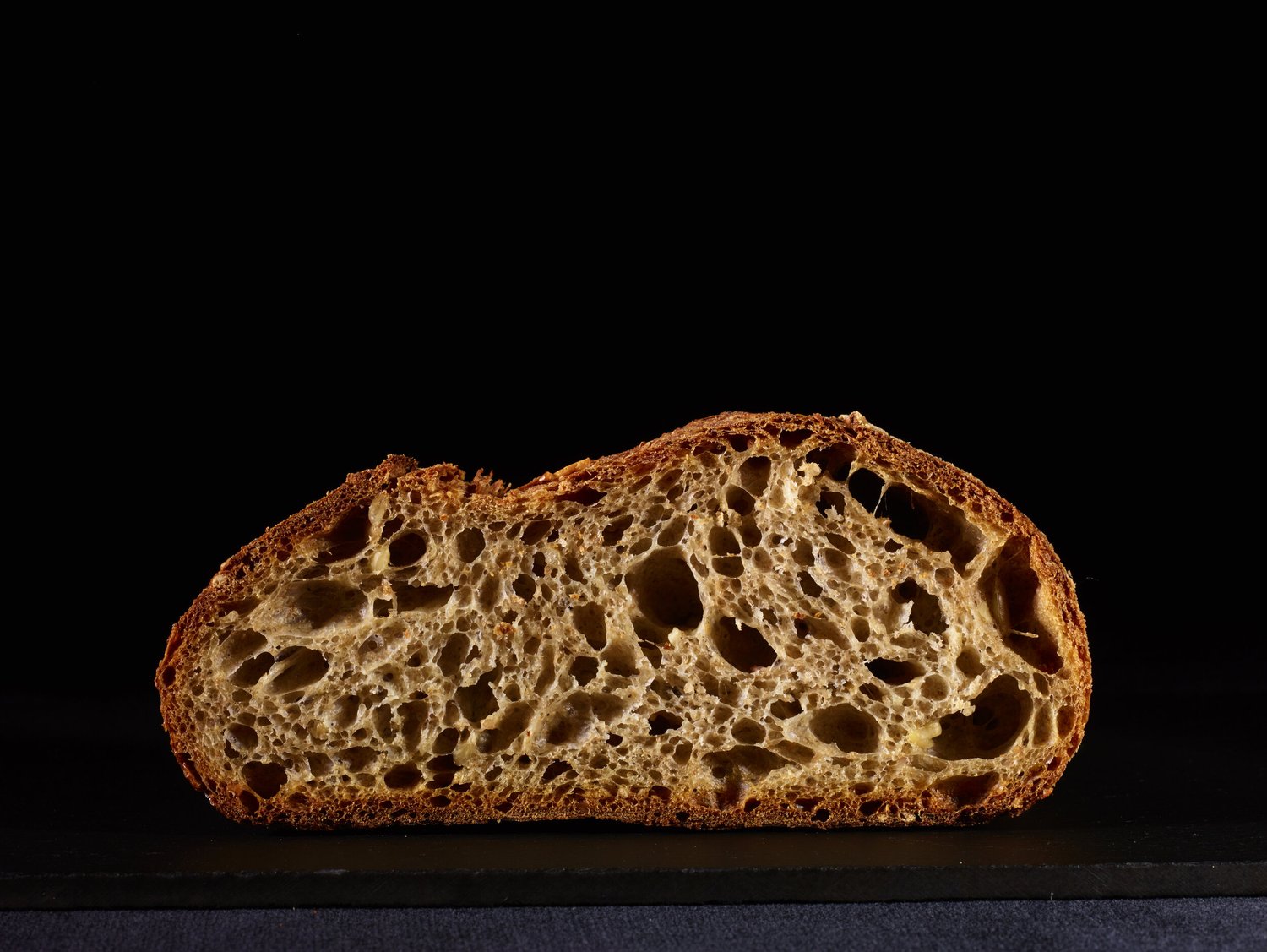
Photography by Thomas Schauer
MJ: And why did you decide to open in New York?
ZG: That's a really good question. No one's asked that in a very long time. I'd been in Portland and Seattle, but two of my significant teachers had just opened businesses there. Once I had taken tutelage from them, I was not going to become their competition. I also knew I didn't want to be in Philly. My girlfriend at the time took me out to New York and we went to Per Se for dinner and it was lovely. And I was like, ‘Well, I want to come back to New York. I'm going to check this out.’ I arranged to have another 30 hours off and we came back out to New York and bakery hopped.
I found a lot of places that I liked, but I quickly realized that nobody was doing what I do. No one was even coming anywhere near the style that I wanted to bring to the world. And so there I was, quietly behind the scenes at Le Bec Fin. Before that, I was quietly behind the scenes with the M Resort. And I was quietly behind the scenes before that with Bakery Nouveau, but I had never put myself out there. And I thought, ‘Well, if I'm going to do it, why not do it here?’ It just seemed right. It seemed like if I was going to be miserable and broke and working my ass off, why not do it where it's going to make waves?
MJ: One hundred percent. And how would you describe your baking style?
ZG: What I was doing was intentional extended fermentation in congruence with the very intentional, very thought out, very experimented blending of grains and blending of fermentation techniques. So in many cases, combining different styles of pre-ferments together to get desired results. I had done so much experimenting that it began to make sense that there's sort of an organic code to how this process works. Something will have to ferment for 10 hours, another thing for six hours, then you combine them and you add a new food source or more of the same food source, and then that harmony begins to work together and you need to give it an additional 20 some, 30 some hours. And the results that you get are extraordinary and unique. So grain blending, slow fermentation, these are my focuses.
It took me 68 hours to make the miche, which is a pretty long time when you're in a business that space equals money, space equals how much output. So having something wait essentially three days before it's going into the oven, it's a big sacrifice, but the results are a totally different style of bread. I've always been more drawn towards the classics. I'm obsessed with the older books, the books from the 1800s, and just these different techniques that people used before. Then there were all these additives and processed ingredients that made everybody's life easier, but I’m leaning more towards the old style of bread.
My original training happened out on this farm in Oregon where it was cold as shit. It was like 50 degrees on a good day. And there was this little old sheep's barn that no longer had sheep in it where we would make the bread. It was so cold in there, so it would take three days to ferment the loaves. But the flavor was outstanding. It took me a little while to understand that it was the course of time. It was because time allowed enzymes that already exist in the grain to be further and further released via the hydration and via the sourdough inoculator. These enzymes would continue to break down the complex carbohydrates, converting them into simpler sugars. Those simpler sugars would then get converted into alcohol, gas, and acid via the digestion of the yeast and the bacteria.
So if you had a healthy sourdough starter and you fed it this nice complex meal, then over the course of a very, very long time it would begin to take on a lot more flavors and aromas than something that was in a warmer environment that fermented faster. It allows the enzymes to do a tremendous amount of work, thereby giving the yeast and the bacteria a more complicated thing to eat, giving you more complicated flavors ultimately. So we focused on slow fermentation. To this day, it takes us 68 hours to make a miche. The croissant takes between 96 and 120 hours to make. It's stupid. It takes so much space to do it that way, but it's also not stupid because the results are worth it.
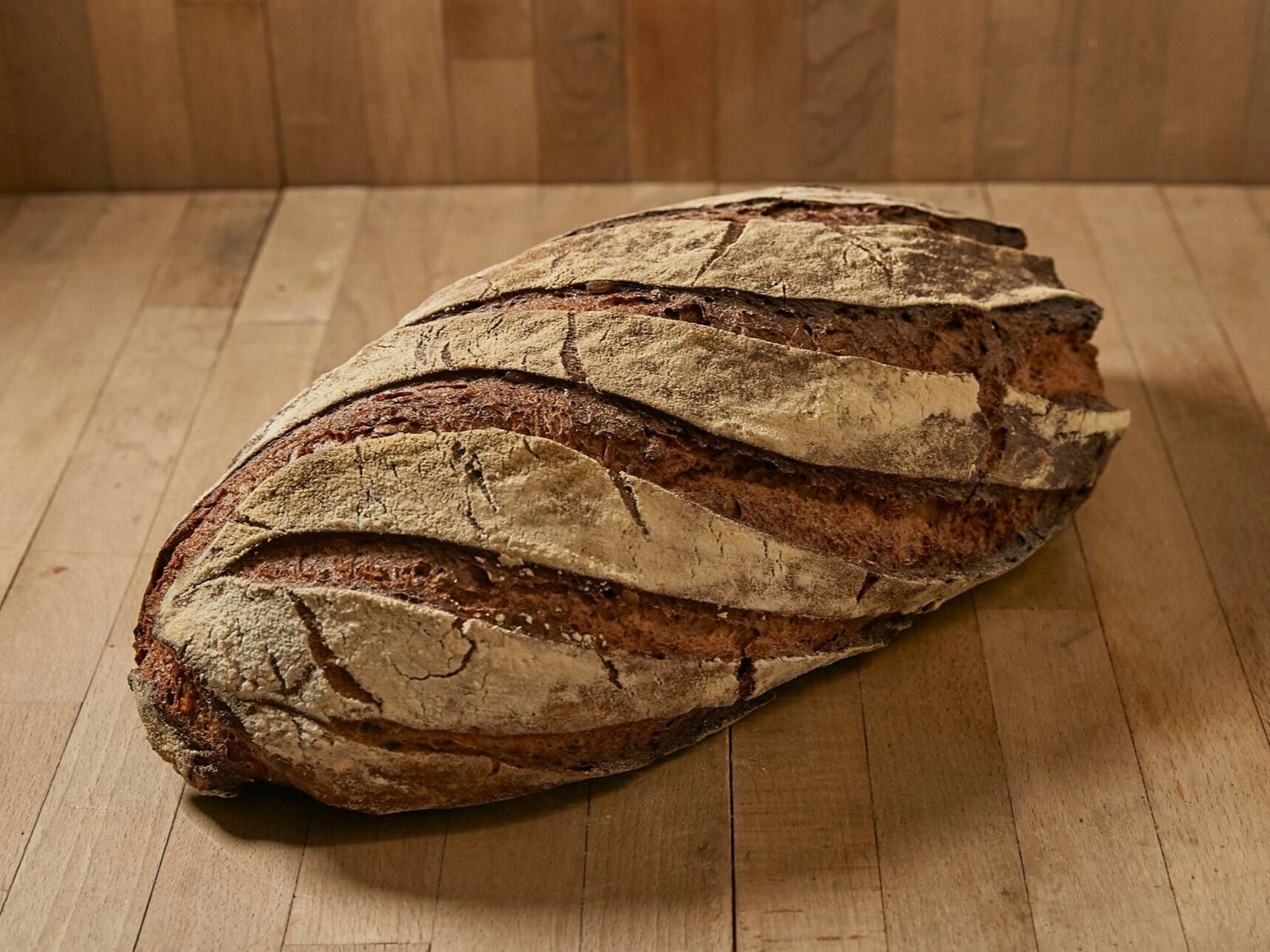
Photography by Hannah Goldfield
MJ: That is fascinating. You mimic that cold environment in your bakeries?
ZG: We use refrigeration. One would have to in a city environment. It's very difficult to do. When we were in our warehouse in Sunset Park, I had the refrigerators set at 48 degrees rather than the standard 38 degrees, which is what the health department wants if you're storing milk and other things in there. So I had a separate cooler and I had a low velocity blower, so you couldn't even feel the breeze. That mimicked what fermenting in a cave or a deep cellar would be like.
MJ: And you shared all the details of this technique in your book, Bien Cuit: The Art of Bread?
ZG: Yes. When the book came out in 2015, I was able to share that information with home bakers and professional bakers across our nation and other English-speaking nations. And the results were pretty awesome. A lot of people were writing me letters and wanting help understanding further layers of the process that they were already undergoing. Most of the questions were about sourdough. That was the one thing that we found people were really, really, really excited about because I did break down the process without very much mystery. It was like, ‘Here is how you do it.’ And it's not that there aren't other ways to do it, but ‘Here's how you do it, where you've got on my record a nearly 100% success rate.’ At that point, dozens of people had tried my method. My method's not my method. My method is a method that I learned and it works.
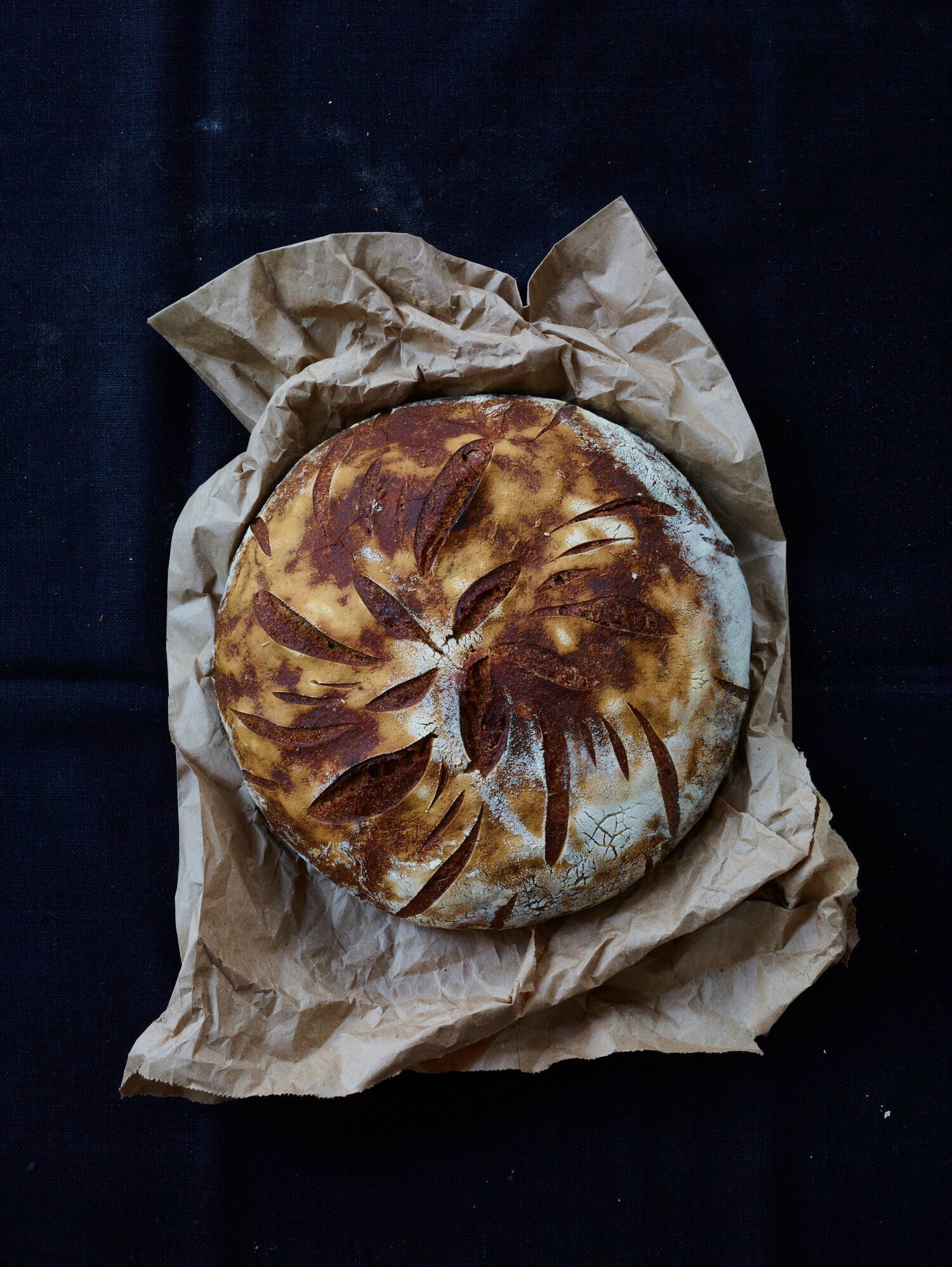
Photography by Thomas Schauer
MJ: Totally. What are you most excited about at the moment?
ZG: Right now, we're in that time of year when you start to see the grain that has been harvested. It has been fully dried. It is now being blended in the facility to get the specs that we are looking for. Then we have to make alterations to our recipes so that we get the same results, so the product looks the same as it did last month. We have to slightly change the recipe every year according to what the wheat and the rye and the barley are doing. Because we're not using commodity wheats, we're using land-raised grains. And those change every year, as far as how they retain moisture and how they're impacted by sodium and acidity through the sourdough process. We have to pay attention to that and experiment and alter ever so slightly to where the customer thinks that nothing ever happened. That is always exciting.
Just on the other side of that, which is actually kind of fun, is doing all the stuff for the winter menu, like the bûche de Noëls, the Thanksgiving pies, the stollen. And doing all the experiments. Coming up with new items has always been a pleasure of mine. But now, as the years have gone by, I'm trying to empower the creative side of my staff, which is almost more fun. Almost like mentoring, but not. We’re equals in a certain light, but also maybe I've done this for 15 years longer than you. If you're going down the road that's going to end in failure, and I've already had that same failure, I'm going to share that information with you and tell you how and why it failed so that you can just bypass that and find your own failures and successes.
Sometimes I'll do some experiments myself, but for the most part, I like my staff to do them and to reach their own understandings by working with the ingredients and making slight alterations in the technique that they're approaching it with. And then seeing the difference in the results and watching them grow. Right now, the creative force in the building, Shane Williams, he's been doing some really incredible work. I've been working with him essentially since the beginning of Covid. And just watching him grow has been outstanding. It's been really thrilling. He has such a unique perception and a palate that is very sensitive. He'll come up with combinations I never would've thought of. Watching my team get better and better—that is my favorite thing.
More from The Journal

Our beautiful and beloved space in Mt. Kisco was destroyed by a fire last month. It is difficult to put into words what this experience is like so we’ve turned to some images we took inside the bui...
Read more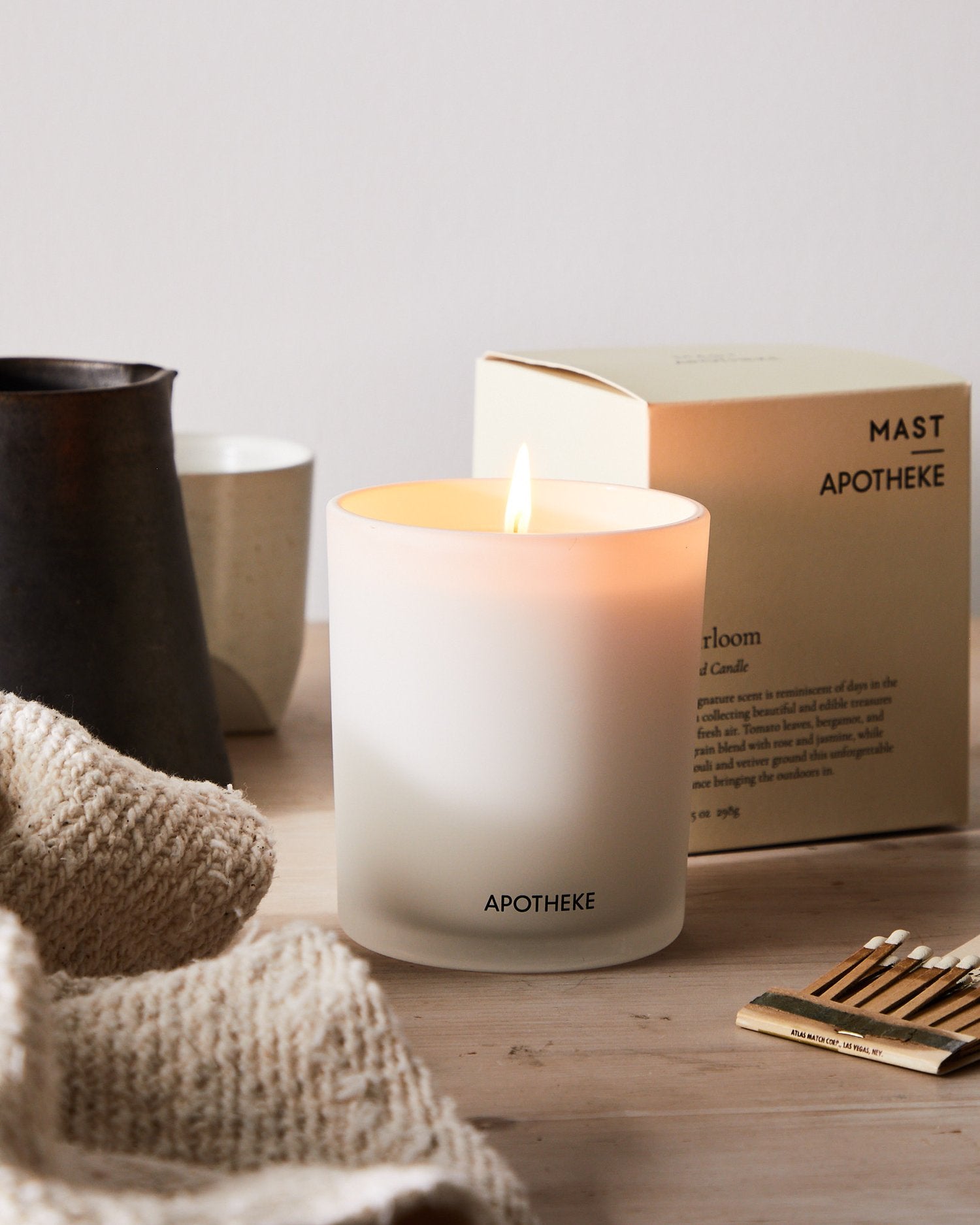
To create the collaboration candle, Apotheke experimented with sustainable materials that meet our high standards, like all-natural apricot wax and essential oil-based fragrances. Here, Carli talks...
Read more